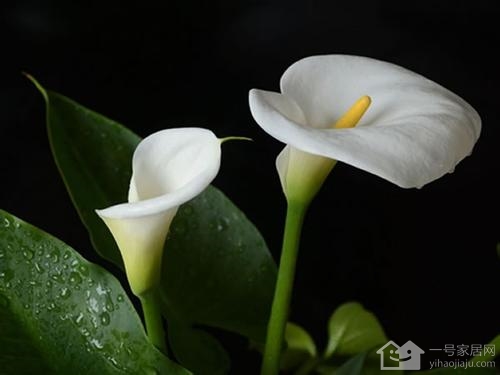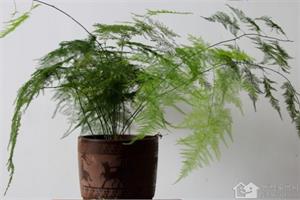How to cultivate calla lilies to cultivate calla lilies
If you want to raise a good plant, you need to be careful, and so do calla lilies. Only in this way can you raise very beautiful calla lilies. Let's take a look at how to raise calla lilies and the matters needing attention.

We have to first determine the conservation environment. Calla is a sturdy perennial herb of the genus Calla of the Araceae, which is similar to Di Shui Guanyin. It also likes warm, moist and sunny environments, and is not resistant to cold and drought.
Calla lotus normal growth temperature is 15 ℃-25 ℃, too high or too low temperature will make it dormant, so we should pay attention to temperature control in the daily maintenance process, of course, is not so strict, but do not frostbite.
Let's talk about soil, calla lilies we use sand to raise the best, usually maintain the soil tide on it, without stagnant water. Of course, it can also be replaced by other media, as long as it has a certain degree of air permeability and water permeability, and pay attention to control the water content at ordinary times.
Calla lilies like to be moist, and should be often watered after long leaves from the Mid-Autumn Festival to the following spring. It is better to keep the basin soil moist and not waterlogged (stagnant water), and often spray water on the leaf surface and nearby ground to increase air humidity and facilitate its growth. However, no matter spraying water or spraying water, we should avoid spraying water on the flowers and prevent the water from flowing to the center of the leaves, otherwise it will easily lead to leaf soft rot. Spray with water close to room temperature in winter. In late May, the amount of water should be reduced to make it dormant, stop watering after the leaves are yellow, and put calla lilies in a cool and ventilated place where there is no rain.
Calla lilies are sunny, like long light, and avoid strong light. From the long leaves of the Mid-Autumn Festival to the flowering in winter and spring, there should be more sunshine, especially after moving into the shed in winter, full light should be given to maintain more than 10 ℃. New Year's Day began to bud before the Spring Festival and reached full flowering in March-April. Lack of light in winter, the florescence is delayed, or only the bud does not blossom, or even the bud gradually turns green and shriveled. Move to a ventilated and cool place in late May. The summer high temperature period is its dormant period, reduce watering and fertilization, and need proper shade when the sun is strong.
When calla is propagated, we can choose ramet or bulb propagation, plant reproduction, dig up the tuber of the strong mother plant after the main flowering period or dormancy period, and cut a clump into 2-3 clumps according to the size of the original tuber and the number of bud points, each clump with 2-3 bud points, planted separately, managed normally, and can bloom after 3 months. Molecular balls propagate and dig up the dormant tubers. After normal ramet, some smaller tubers will be cut off. These small tubers need to be cultivated in the open field for 1 or 2 years before they can be used as flowering bulbs.
In order to raise calla lilies well, we need to pay attention to several basic points, such as environment, soil, fertilizer, watering and so on.
We have to first determine the conservation environment. Calla is a sturdy perennial herb of the genus Calla of the Araceae, which is similar to Di Shui Guanyin. It also likes warm, moist and sunny environments, and is not resistant to cold and drought.
Calla lotus normal growth temperature is 15 ℃-25 ℃, too high or too low temperature will make it dormant, so we should pay attention to temperature control in the daily maintenance process, of course, is not so strict, but do not frostbite.
Let's talk about soil, calla lilies we use sand to raise the best, usually maintain the soil tide on it, without stagnant water. Of course, it can also be replaced by other media, as long as it has a certain degree of air permeability and water permeability, and pay attention to control the water content at ordinary times.
Calla lilies like to be moist, and should be often watered after long leaves from the Mid-Autumn Festival to the following spring. It is better to keep the basin soil moist and not waterlogged (stagnant water), and often spray water on the leaf surface and nearby ground to increase air humidity and facilitate its growth. However, no matter spraying water or spraying water, we should avoid spraying water on the flowers and prevent the water from flowing to the center of the leaves, otherwise it will easily lead to leaf soft rot. Spray with water close to room temperature in winter. In late May, the amount of water should be reduced to make it dormant, stop watering after the leaves are yellow, and put calla lilies in a cool and ventilated place where there is no rain.
Calla lilies are sunny, like long light, and avoid strong light. From the long leaves of the Mid-Autumn Festival to the flowering in winter and spring, there should be more sunshine, especially after moving into the shed in winter, full light should be given to maintain more than 10 ℃. New Year's Day began to bud before the Spring Festival and reached full flowering in March-April. Lack of light in winter, the florescence is delayed, or only the bud does not blossom, or even the bud gradually turns green and shriveled. Move to a ventilated and cool place in late May. The summer high temperature period is its dormant period, reduce watering and fertilization, and need proper shade when the sun is strong.
When calla is propagated, we can choose ramet or bulb propagation, plant reproduction, dig up the tuber of the strong mother plant after the main flowering period or dormancy period, and cut a clump into 2-3 clumps according to the size of the original tuber and the number of bud points, each clump with 2-3 bud points, planted separately, managed normally, and can bloom after 3 months. Molecular balls propagate and dig up the dormant tubers. After normal ramet, some smaller tubers will be cut off. These small tubers need to be cultivated in the open field for 1 or 2 years before they can be used as flowering bulbs.
The above is the relevant introduction of this article, I believe you have a simple understanding of this after reading it, if necessary, you can continue to pay attention to the No. 1 home network for more information.
Related
- Wuhan Hospital Iron Tree Blooming Result Was Instantly Frightened by the Gardener Master
- Which variety of camellia is the most fragrant and best? Which one do you like best?
- What is the small blue coat, the breeding methods and matters needing attention of the succulent plant
- Dormancy time and maintenance management of succulent plants during dormancy
- Minas succulent how to raise, Minas succulent plant pictures
- What are the varieties of winter succulent plants
- How to raise succulent plants in twelve rolls? let's take a look at some experience of breeding twelve rolls.
- Attention should be paid to water control for succulent plants during dormant period (winter and summer)
- Watering experience of twelve rolls of succulent plants
- Techniques for fertilizing succulent plants. An article will let you know how to fertilize succulent plants.



